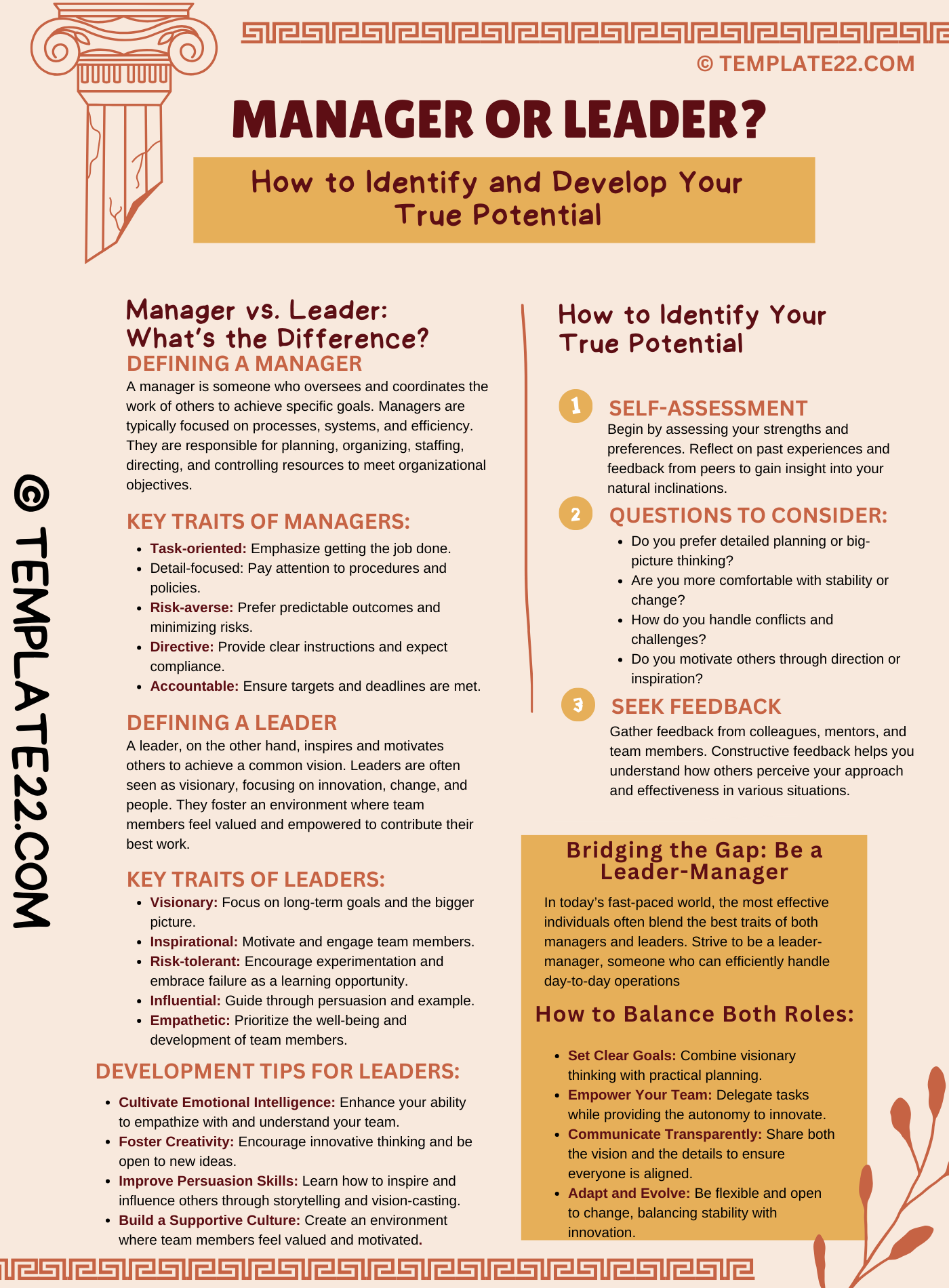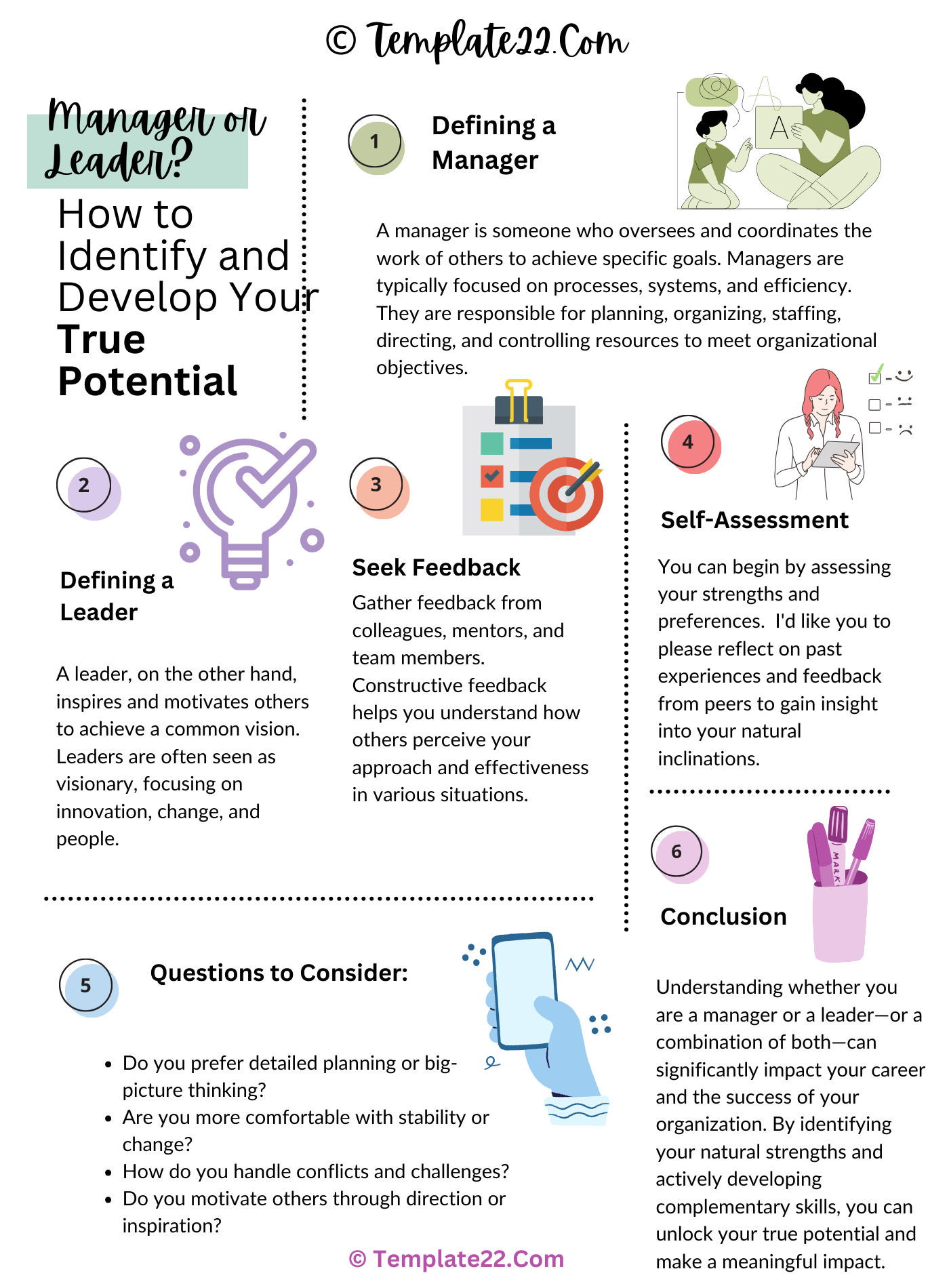 Are you a manager or a leader? This question often sparks a debate in the corporate world. While some people use the terms interchangeably, they signify different approaches to guiding teams and organizations. Understanding these differences can help you identify and develop your true potential. Let’s explore what sets Manager or Leader apart, and how you can harness the best of both worlds.
Are you a manager or a leader? This question often sparks a debate in the corporate world. While some people use the terms interchangeably, they signify different approaches to guiding teams and organizations. Understanding these differences can help you identify and develop your true potential. Let’s explore what sets Manager or Leader apart, and how you can harness the best of both worlds.
Manager vs. Leader: What’s the Difference?
Defining a Manager
A manager is someone who oversees and coordinates the work of others to achieve specific goals. Managers are typically focused on processes, systems, and efficiency. They are responsible for planning, organizing, staffing, directing, and controlling resources to meet organizational objectives.
CLICK HERE TO DOWNLOAD 300+ PROJECT MANAGEMENT TEMPLATES & DOCUMENTS IN EXCEL
Key Traits of Managers:
- Task-oriented: Emphasize getting the job done.
- Detail-focused: Pay attention to procedures and policies.
- Risk-averse: Prefer predictable outcomes and minimizing risks.
- Directive: Provide clear instructions and expect compliance.
- Accountable: Ensure targets and deadlines are met.
Defining a Leader
A leader, on the other hand, inspires and motivates others to achieve a common vision. Leaders are often seen as visionary, focusing on innovation, change, and people. They foster an environment where team members feel valued and empowered to contribute their best work.
Key Traits of Leaders:
- Visionary: Focus on long-term goals and the bigger picture.
- Inspirational: Motivate and engage team members.
- Risk-tolerant: Encourage experimentation and embrace failure as a learning opportunity.
- Influential: Guide through persuasion and example.
- Empathetic: Prioritize the well-being and development of team members.
How to Identify Your True Potential
Self-Assessment
Begin by assessing your strengths and preferences. Do you thrive in structured environments where you can optimize processes, or do you excel in dynamic settings where you can inspire and drive change? Reflect on past experiences and peer feedback to gain insight into your natural inclinations.
CLICK HERE TO DOWNLOAD 300+ PROJECT MANAGEMENT TEMPLATES & DOCUMENTS IN EXCEL
Questions to Consider:
- Do you prefer detailed planning or big-picture thinking?
- Are you more comfortable with stability or change?
- How do you handle conflicts and challenges?
- Do you motivate others through direction or inspiration?
Seek Feedback
Gather feedback from colleagues, mentors, and team members. Their perspectives can provide valuable insights into your strengths and areas for improvement. Constructive feedback helps you understand how others perceive your approach and effectiveness in various situations.
Ways to Gather Feedback:
- Conduct 360-degree reviews.
- Ask for specific examples of your strengths and areas to improve.
- Engage in open conversations with trusted peers.
Developing Your Potential
For Aspiring Managers
If you identify more with managerial traits, focus on enhancing your organizational and strategic skills. Effective managers are indispensable for maintaining operational efficiency and achieving short-term goals.
Development Tips for Managers:
- Strengthen Analytical Skills: Sharpen your ability to analyze data and make informed decisions.
- Improve Time Management: Learn to prioritize tasks and delegate effectively.
- Enhance Communication: Develop clear and concise communication skills for giving instructions and feedback.
- Build Process Knowledge: Deepen your understanding of industry best practices and standards.
For Aspiring Leaders
If leadership resonates with you, concentrate on honing your visionary and motivational capabilities. Strong leaders are crucial for driving innovation and fostering a positive organizational culture.
Development Tips for Leaders:
- Cultivate Emotional Intelligence: Enhance your ability to empathize with and understand your team.
- Foster Creativity: Encourage innovative thinking and be open to new ideas.
- Improve Persuasion Skills: Learn how to inspire and influence others through storytelling and vision-casting.
- Build a Supportive Culture: Create an environment where team members feel valued and motivated.
Bridging the Gap: Be a Leader-Manager
In today’s fast-paced world, the most effective individuals often blend the best traits of both managers and leaders. Strive to be a leader-manager, someone who can efficiently handle day-to-day operations while also inspiring and guiding teams toward long-term success.
How to Balance Both Roles:
- Set Clear Goals: Combine visionary thinking with practical planning.
- Empower Your Team: Delegate tasks while providing the autonomy to innovate.
- Communicate Transparently: Share both the vision and the details to ensure everyone is aligned.
- Adapt and Evolve: Be flexible and open to change, balancing stability with innovation.
Conclusion
Understanding whether you are a manager or a leader—or a combination of both—can significantly impact your career and the success of your organization. By identifying your natural strengths and actively developing complementary skills, you can unlock your true potential and make a meaningful impact. Remember, the best leaders manage, and the best managers lead. Embrace the journey of self-discovery and continuous growth to become the best version of yourself.
